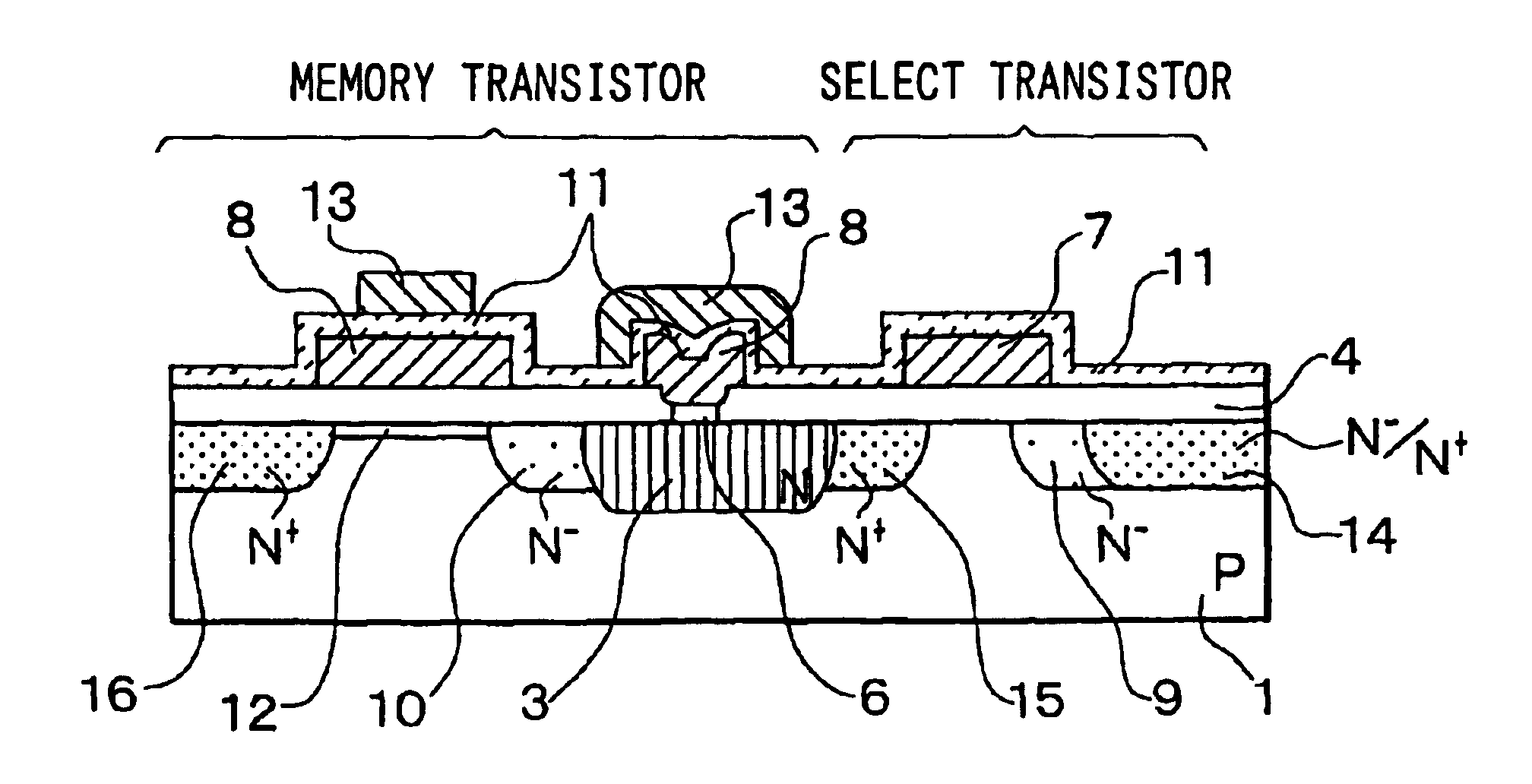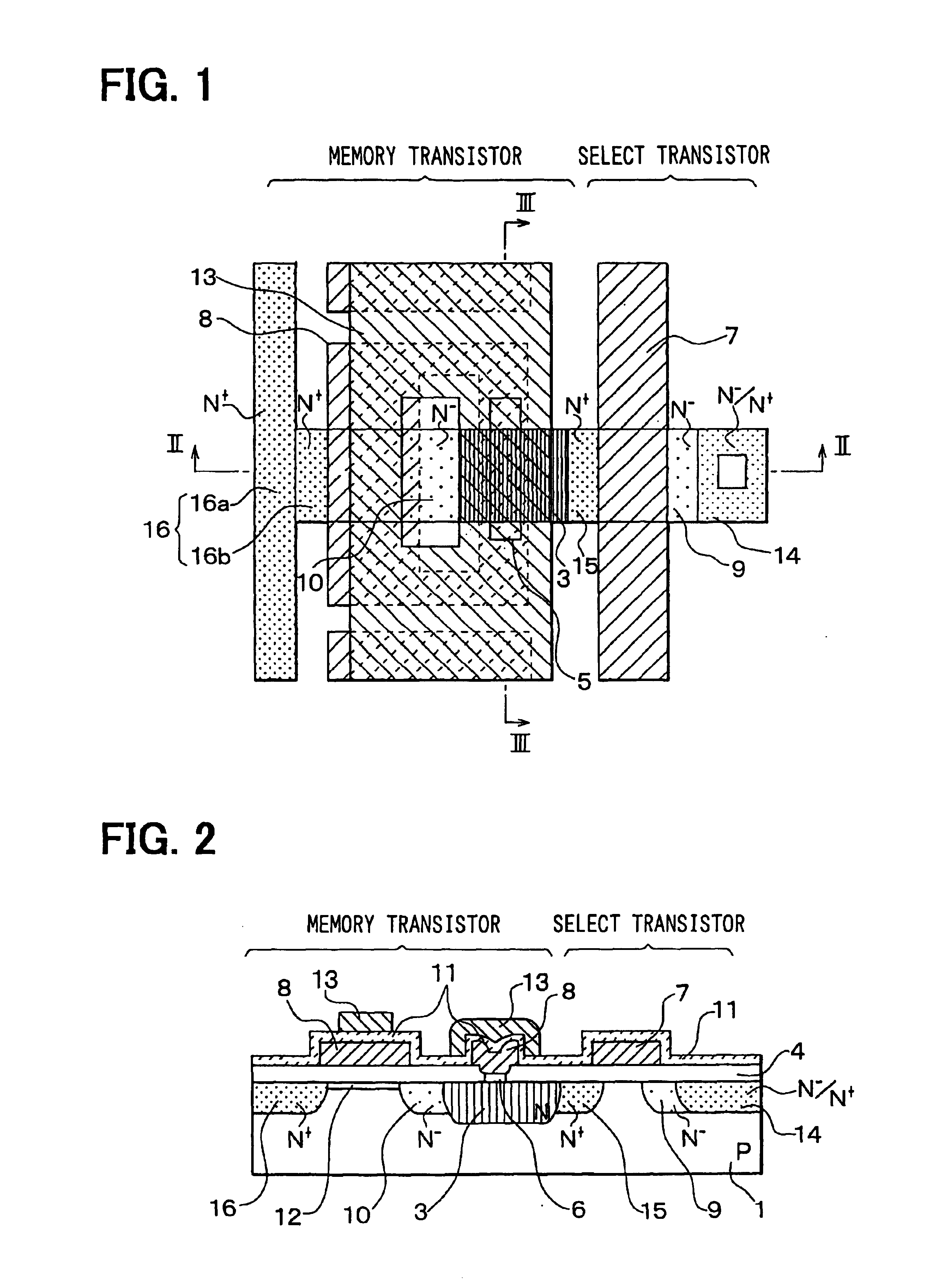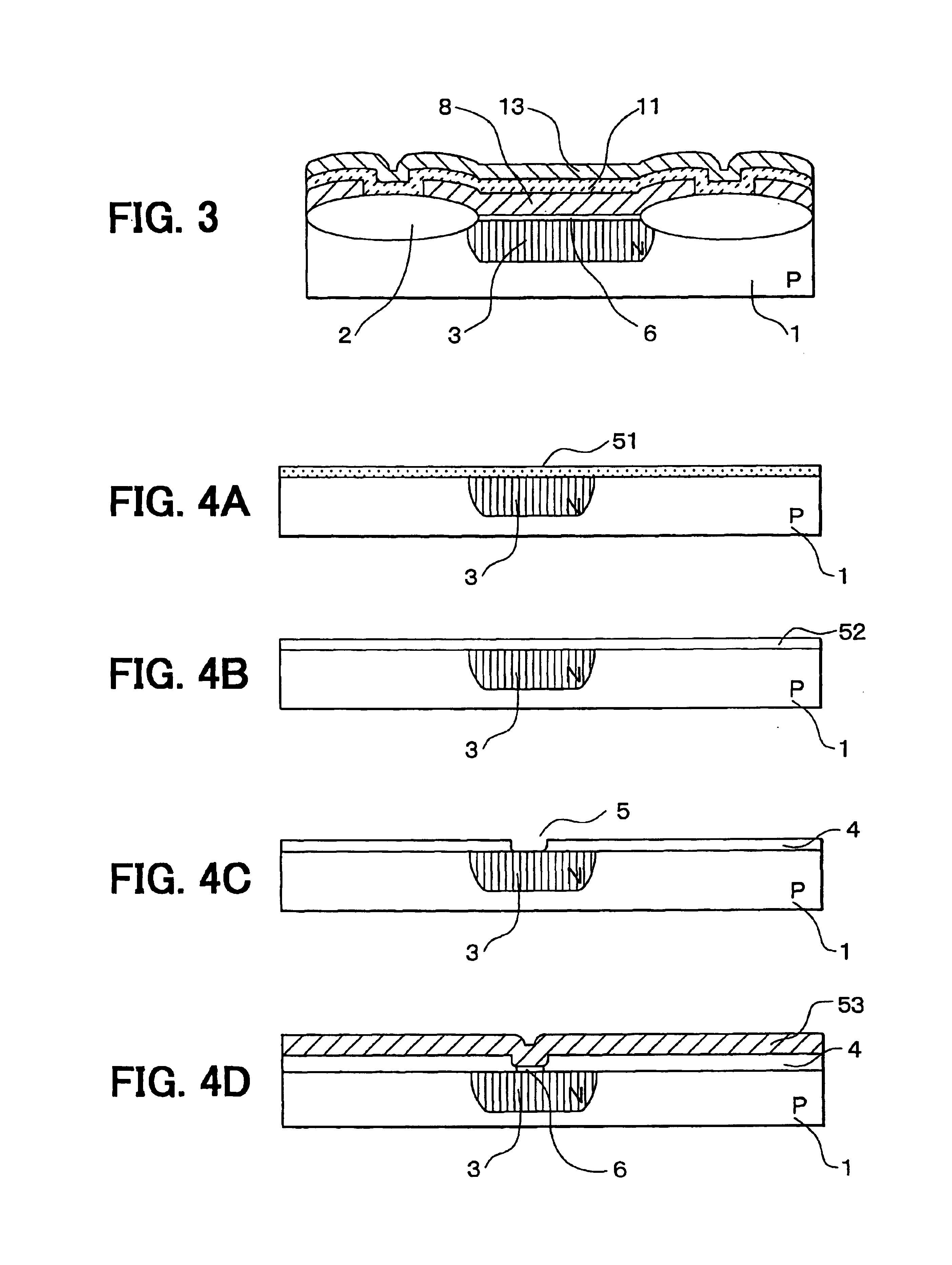EEPROM and EEPROM manufacturing method
a technology of floating gate and manufacturing method, which is applied in the direction of semiconductor devices, electrical devices, transistors, etc., can solve the problems of low overwriting speed, so as to reduce the dispersion of memory transistor characteristics, suppress the reduction of overwriting life and deterioration of charge holding characteristics, and the effect of superior eeprom
- Summary
- Abstract
- Description
- Claims
- Application Information
AI Technical Summary
Benefits of technology
Problems solved by technology
Method used
Image
Examples
Embodiment Construction
[0041](First Preferred Embodiment)
[0042]A plan view of an EEPROM of a first preferred embodiment of the invention is shown in FIG. 1, a sectional view along the line II—II in FIG. 1 is shown in FIG. 2, and a sectional view along the line III—III in FIG. 1 is shown in FIG. 3. The hatching in FIG. 1 has been added to show different regions.
[0043]The EEPROM of this preferred embodiment has a memory transistor and a select transistor.
[0044]In the memory transistor region, as shown in FIG. 2, an N-type embedded layer 3 and an N−-type drain side field moderating layer 10 and an N+-type source leadout layer 16 are formed in a superficial layer of a P-type semiconductor substrate 1 made of silicon. A tunnel film 6 is formed above the embedded layer 3, and a gate oxide film 4 is formed on the rest of the surface of the semiconductor substrate 1. A floating gate electrode 8 is formed on the tunnel film 6 and on the region between the field moderating layer 10 and the N+-type source leadout la...
PUM
 Login to View More
Login to View More Abstract
Description
Claims
Application Information
 Login to View More
Login to View More - R&D
- Intellectual Property
- Life Sciences
- Materials
- Tech Scout
- Unparalleled Data Quality
- Higher Quality Content
- 60% Fewer Hallucinations
Browse by: Latest US Patents, China's latest patents, Technical Efficacy Thesaurus, Application Domain, Technology Topic, Popular Technical Reports.
© 2025 PatSnap. All rights reserved.Legal|Privacy policy|Modern Slavery Act Transparency Statement|Sitemap|About US| Contact US: help@patsnap.com



